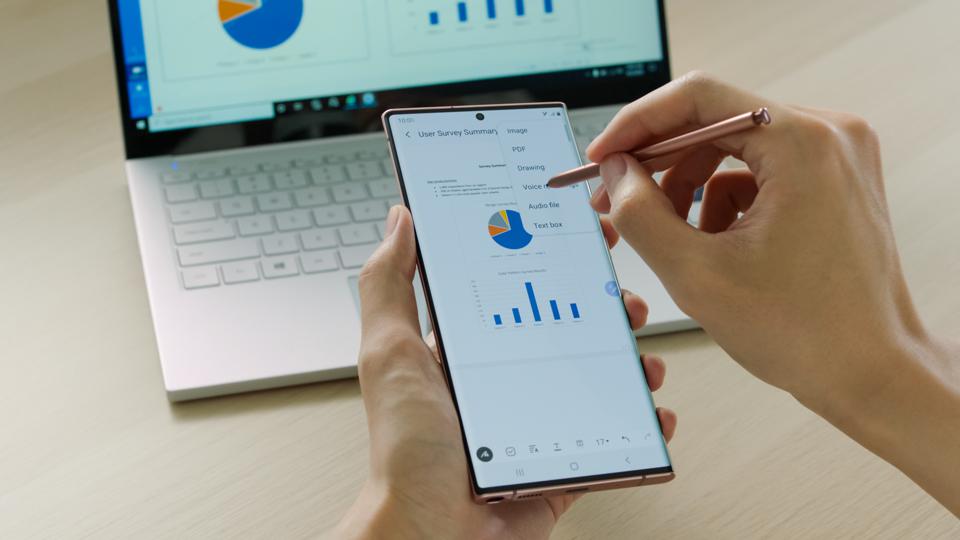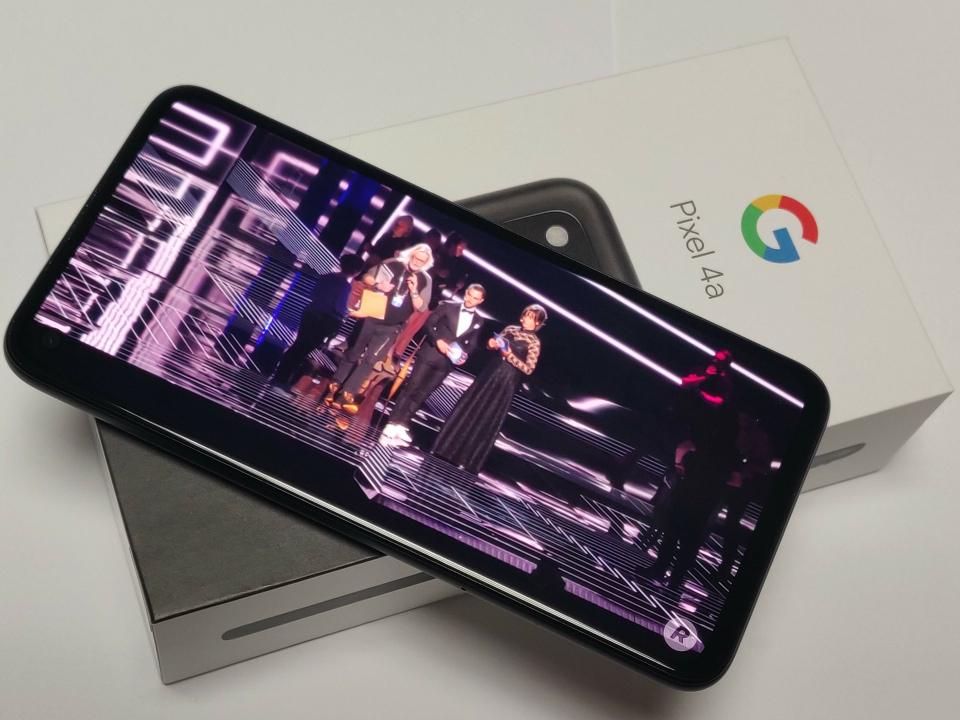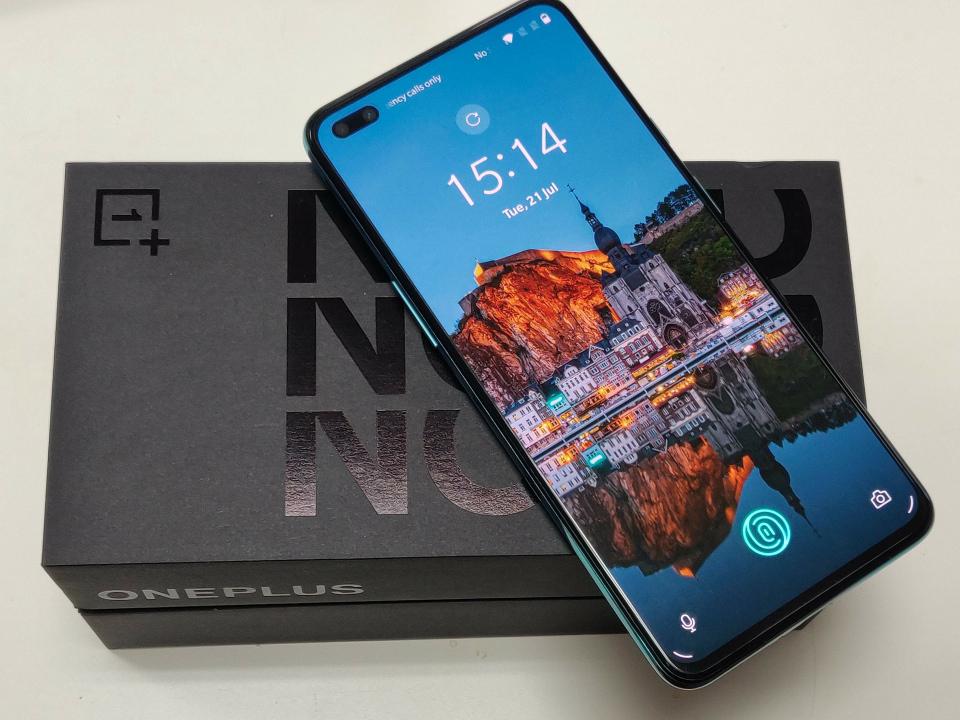Taking a look back at seven days of news and headlines across the world of Android, this week’s Android Circuit includes the new Galaxy Note 20, news from Samsung Unpacked, the Google Pixel 4a reviews, Pixel takes on Nord and iPhone SE, OnePlus bundling Facebook, Huawei’s next setback, and the death of Google Play Music.
Aug 8 Pixel 5 leak update, post originally published Aug 7:
Android Circuit is here to remind you of a few of the many things that have happened around Android in the last week (and you can find the weekly Apple news digest here).
Samsung’s Unpacked Goes Virtual
Samsung rolled out a number of key devices this week at it’s Autumn ‘Unpacked’ event. Supporting the Galaxy Note 20 family and the Galaxy Z Fold 2 were the Galaxy Buds Live, the Galaxy Watch 3, and the Galaxy Tab S7 family. From the press release:
“Today, Samsung Electronics Co., Ltd. hosted its first-ever Galaxy Unpacked virtual event livestreamed from Korea to introduce a new suite of power devices. Five devices were revealed during the event, that seamlessly integrate to empower consumers navigating a rapidly changing world: Galaxy Note20 and Galaxy Note20 Ultra, the most powerful Note series yet; Tab S7 and S7+, versatile tablets for productivity and creativity; Galaxy Watch3, a premium smartwatch along with advanced health features; Galaxy Buds Live, stylish and ergonomic earbuds with amazing sound quality; and Galaxy Z Fold2, the next generation foldable smartphone with enhanced refinements.”
Recommended For You

The new Galaxy Note 20.
Samsung Newsroom
Pride of place goes to the Galaxy Note 20 and the Note 20 Ultra. The brand-name that effectively launched the large form phablet phone continues to innovate with the large screen and stylus support. But does a world coming to terms with COvid-19 field lockdown need a powerhouse portable phone? Joanna Stern for the Wall Street Journal:
“It didn’t matter what analyst I asked, they all agreed: People are limiting spending, especially on expensive smartphones.
“The high end of the smartphone market is the hardest hit by the virus,” said Vincent Thielke, an analyst at research firm Canalys, which recently reported that in the second quarter of 2020, the global smartphone market plummeted 14% in shipments, with Samsung falling behind Huawei.”
The Galaxy Z Fold 2 is Samsung’s second ‘book phone’ with a folding screen representing the pages. Where last year’s Fold felt like a concept car to show that it could be done, this year’s model has taken on the feedback and re-engineered the handset. Gizmodo’s Sam Rutherford:
“The Z Fold 2’s flexible screen is slightly larger than the one on its predecessor (7.3-inches for the original Fold), while also boasting slightly better durability thanks to the use of Samsung’s ultra thin flexible glass. Samsung claims it has re-engineered the entire structure of its ultra thin glass to provide increased durability, rigidity, and scratch-resistance.
“…On the inside of the hinge, Samsung even added new sweeper bristles that should do a better job of keeping dirt or other detritus from getting inside the phone, while shorter bristles mean the hinge mechanism takes up less space. While each change on its own might seem small, when combined, the result is a significant much sleeker-looking and polished device.”
And if you want to relive the event, The Verge’s liveblog is waiting for you.
Keeping The Galaxy Up To Date
Samsung has also confirmed that it will deliver three years of software updates alongside three years of security updates to all of its Galaxy devices. This represents an extra year of software updates compared to the industry practice of “2 years / 3 years” on new devices. Ben Schoon reports:
“That means you can expect another year of life from the Galaxy S10, S10+, S10e, Note 10, Note 10+, S20, S20+, S20 Ultra, and now the new Note 20 series as well. Samsung hasn’t explicitly confirmed the same policy for its foldables released in that time — Galaxy Fold and Galaxy Z Flip/5G — but we’d assume they will also be included. For tablets, too, Samsung hasn’t confirmed anything just yet.
“This is, frankly, fantastic news, and something everyone wanted the company to do. Now the biggest question is how long these updates will take to arrive.”
The Google Pixel 4a Finally Arrives
This week saw the delayed launch of the Pixel 4a due to the impact of the Coronavirus Pandemic. Google’s mid-range phone may be missing some of the headline flagship features (which no doubt will appear in the Pixel 5 later this year) but is proving popular with reviewers. Here’s Samuel Gibbs for The Guardian:
“Day-to-day performance was really good, matching the sort of smooth operation you would expect of top-spec phones from the last few years. Switching between apps, loading images, unlocking the phone and other bits was snappy; even games such as Real Racing 3 performed well.
“Battery life was also good for a relatively small and light phone. The Pixel 4a lasts 31 hours between charges, which is significantly longer than the larger Pixel 3a XL and iPhone SE (both 27 hours), consistently going from 7am on day one until 2pm on day two.”
I reviewed the new handset, including the compromises made to reach the £349 price tag:
“That there’s no IP rating will not come as a surprise, but with no mention of splash protection, there’s a question over just how survivable the Pixel 4a will be around water and moisture. There’s no 5G here (but Google did announce a Pixel 4a 5G version will be on sale later this year). Neither do you have wireless charging or the battery, or a mix of glass and metal in the materials (polycarbonate all the way), or a choice of colors (you just have ‘Just Black’ to choose from).”

Google Pixel 4a
Ewan Spence
The Triple Header Of Pixel 4a vs Nord vs SE
The Pixel 4a entered a crowded market, but the high-profile competitors are the OnePlus Nord and the iPhone SE. Expect lots of comparisons between these handsets over the next few months as we get familiar with the capabilities. iJames Rogerson runs the initial numbers, including the respective cameras:
“As with everything else you’ll have to wait for our review to see how the Pixel 4a performs in practice, but we were fairly impressed by both the iPhone SE (2020) and the OnePlus Nord. We noted that the iPhone’s camera was good but not market-leading, and that the Nord’s main lens could capture detailed, bright shots.”
August 8 Update: Google also pre-announced the Pixel 4a 5G and the Pixel 5 – giving consumers looking at the Pixel 4a a chance to consider buying or waiting. But the exact release date was not revealed. At least not officially. Kyle Bradshaw reports:
“…a 9to5Google reader from France spotted that the official Pixel 4a announcement blog post from Google France, unlike the English version, briefly made mention of the launch date for the Pixel 4a (5G) and Pixel 5. Though the mention has since been taken down, the version that references the Pixel 5 is still available via Google cache (for now); The Pixel 4a (5G) and Pixel 5 will be available for pre-order from October 8, 2020¹.”
Facebook Services Pre-Installed On OnePlus Handsets
Famed for its lean and minimalist OxygenOS, OnePlus has confirmed this week that new handsets (including the OnePlus 8, 8 Pro, and the Nord) not only have have the Facebook App Installer pre-installed, with no option for users to remove this additional software service. Chris Smith reports:
“The handsets all rock the back-end Facebook App Installer, Facebook App Manager, and Facebook Services as system apps, as well as the consumer-facing Facebook, Messenger and Instagram apps. While the apps themselves can be removed from the phone, the back-end Facebook services cannot. That amounts to bloatware.”
More at Trusted Reviews. Android Poilce’s Karandeep Singh spoke to OnePlus on this issue:
“We reached out to OnePlus for comment and they confirmed to us that the OnePlus 8, 8 Pro, and Nord all include the Facebook App Installer, Facebook App Manager, and Facebook Services as system apps. The main Facebook app, Messenger, and Instagram are also present, as well as Netflix. In response to a feature suggestion under its Ideas campaign, OnePlus reasoned that the pre-installation of these apps ensures better battery efficiency on Facebook and enhances HDR playback on Netflix — make of that what you will.”
The community reaction makes for interesting reading.

OnePlus Nord (Ewan Spence)
Ewan Spence
Huawei Faces Processor Setback
Its inclusion on the US Entity List has created another headache for Huawei. The upcoming Huawei Mate 40 smartphone will be the last handset to use Huawei’s Kirin system on chip. Why? It is fabricated by TSMC and the Taiwanese multinational company will not be able to do business with Huawei. C. Scott Brown reports:
“In a speech, Huawei’s consumer business CEO Yu Chengdong said that its line of Kirin chipsets “cannot be manufactured” after September 15, 2020. That is when the United States ban on Huawei working with US-based firms will take permanent effect.
“…Huawei’s chipsets are manufactured by TSMC which uses equipment sourced from the US. The rules related to the so-called Entity List instituted by the Trump administration state that any foreign chipset manufacturer needs to get a license to sell to Huawei. Recently, TSMC confirmed it will no longer sell chips to Huawei, which must mean it could not get a license.”
And Finally…
Google Play Music is finally being wound down. The awkward transition mixing in your own cloud-based music service with the monthly subscription service that is YouTube Music has begun. Basically, if you’ve been using Google Play Music, now is the time to get your music and data backed up before it gets scrambled. Ron Amadeo reports:
“YouTube Music places an emphasis on music videos, as you can guess from the name, and the app has a more modern design. YouTube Music awkwardly blends together your entire 15-year YouTube activity history with your music collection, tossing any “liked” videos and subscriptions that have been algorithmically been flagged as “music” into your collection, and mixing together your YouTube playlists and Google Music playlists. There is no way to stop this.”
Android Circuit rounds up the news from the Android world every weekend here on Forbes. Don’t forget to follow me so you don’t miss any coverage in the future, and of course read the sister column in Apple Loop! Last week’s Android Circuit can be found here, and if you have any news and links you’d like to see featured in Android Circuit, get in touch!




